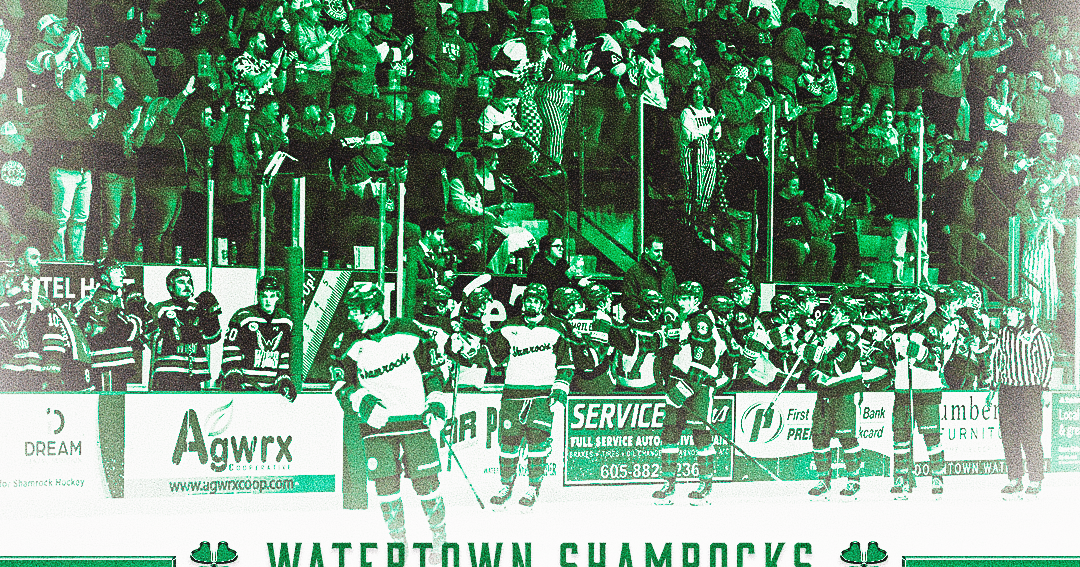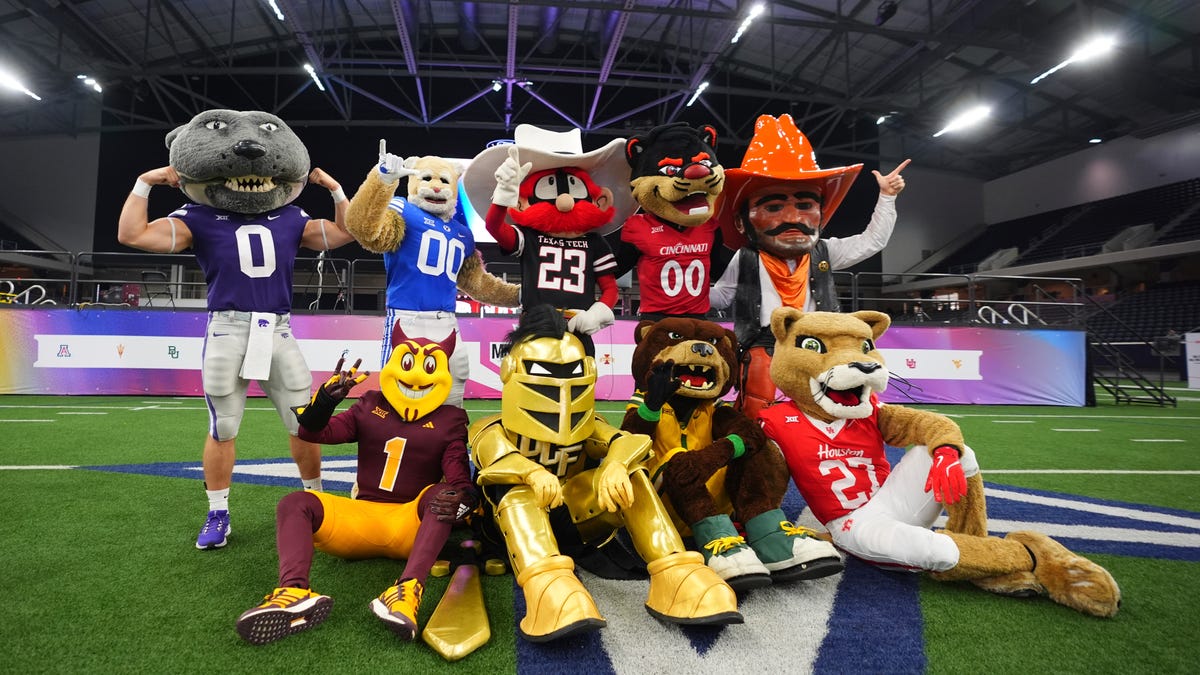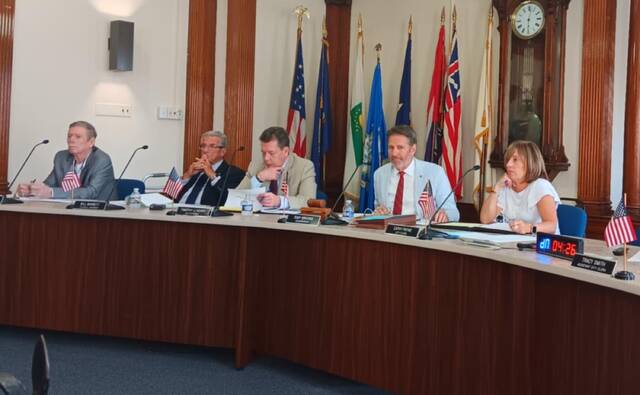COLUMBUS, Ohio — It wasn’t until last March, when top-notch defenseman Jackson Smith and the Tri-City Americans were nearing the end of the regular season, that Smith started to consider a different path for his future.
Five months earlier, the NCAA changed its long-held rule that players who compete in any of the Canadian Hockey League’s three branches — the Ontario Hockey League, the Western Hockey League, and the Quebec Maritimes Junior Hockey League — were ineligible to play college hockey.
But even that rule change, which was lauded just about everywhere in hockey except the CHL, didn’t register with Smith, who was born and raised in Calgary and elevated his play dramatically in 2024-25, his second season in the WHL.
“When the rule first came out, I didn’t even look at it,” said Smith, a big, two-way defenseman who was selected No. 14 overall by the Columbus Blue Jackets at last month’s NHL draft. “It was maybe not until March when my dad brought it up, like, ‘We should look into this.’
“I was like, school? I wasn’t really thinking about that.”
But over the last few months, it’s all anybody can talk about at the top levels of developmental hockey. And the Blue Jackets are right in the middle of it. Columbus’ top two prospects — Smith and center Cayden Lindstrom, the No. 4 pick in 2024 — have both made the leap from CHL to NCAA this summer.
Smith took only one recruiting visit and decided to play at Penn State in the fall. He was blown away, he said, by the Nittany Lions’ facilities, as well as the opportunity to play against older players over the next two seasons. The majority of NCAA players are between 22 and 24 years old.
Lindstrom, who missed most of last season following back surgery, was the target of a fierce recruiting battle and ended up choosing Michigan State. The lighter game schedule in the NCAA — 34 regular-season games vs. 68 in junior hockey — will allow more time for off-ice work and recovery and less time traveling.
“I think it’s huge, and I think it’s just the beginning,” Lindstrom said. “It gives players a chance to develop at a higher level against older guys. Say you’re dominating the WHL, that’s kind of your next step as a hockey player and a person and, academically as well.”
Unless Smith is ready to play in the NHL in 2026-27, which seems unlikely, he’ll likely play two years at Penn State before turning pro. On that schedule, he’d be able to play for the Blue Jackets’ American Hockey League affiliate in Cleveland before joining the big club.
Lindstrom, a year old, will likely turn pro after one season at Michigan State.
Lindstrom and Smith are the Blue Jackets’ only examples of players leaving the CHL for the NCAA, but the Columbus imprint on college hockey next season will be bigger than ever.
The Blue Jackets will have 10 players in the NCAA this coming season, by far the highest number in the franchise’s 25-year history. Ten seasons ago, they had just three players in college hockey, and last season, they had only four.
The others arrived in the NCAA through pipelines that were available before the name change:
- Goaltender Melvin Strahl (Michigan State), forward William Whitelaw (Western Michigan), defensemen Andrew Strathmann (North Dakota), Tanner Henricks (St. Cloud State) all played in the United States Hockey League
- Forwards James Fisher (Northeastern) and Jeremy Loranger (Nebraska-Omaha), and defenseman Luke Ashton (Cornell) played in the British Columbus Junior Hockey League, at the junior-A level
- Defenseman Malte Vass (Boston U.) is a European import
But the moves by Lindstrom and Smith are the ones everybody’s watching. Gavin McKenna, who played with Lindstrom at times the last two seasons with Medicine Hat in the WHL, announced to much fanfare on Wednesday that he’ll attend Penn State with Smith in the fall.
“As we live in the reality of it, it seems like each case is going to be different,” said Blue Jackets director of hockey operations Rick Nash, who has worked extensively on the development side of hockey since he retired as a player in 2018.
“It’ll be interesting to see how it all pans out, but right now I think it’s exciting that some of these kids get to experience both major junior and the NCAA.”
Smith, who turned 18 in May, had 11-43-54 and 48 penalty minutes in 68 games for Tri-City. There are still aspects of the game he could improve at the major-junior level, but nothing could prepare him to play in the NHL quite like playing against older, more developed players.
“The CHL is an unbelievable league,” Smith said during Blue Jackets development camp last week. “I loved my two years in Tri-Cities, like I’ve said a number of times. But having that other option there … (NCAA) is an older league, stronger guys, and the facilities there are pretty great.
“Getting to use those and getting to play against stronger competition gets you a bit more ready for the NHL, which is, ultimately, every hockey player’s dream.”
When the Blue Jackets drafted Lindstrom, it was known that he’d had back issues, but the Blue Jackets believed it could be healed with rest and a patient approach. Ultimately, it was learned that Lindstrom needed back surgery last fall, and after a long, arduous recovery, he’s back on the ice.
The Blue Jackets didn’t sign Lindstrom to an entry-level contract quickly, as many of the other high draft picks typically do, and many wondered if his back injury was the reason.
It wasn’t. Lindstrom and his agent, Daren Hermiston, had college hockey on their radar as his best path to the NHL, and the Blue Jackets agreed. That’s why he still hasn’t signed an ELC — if he had signed a professional contract, he would not be allowed to play in the NCAA.
Two other recent Blue Jackets draft picks could have benefited from this rule change. No longer do parents face a tough decision — CHL or NCAA? — when the player is only 16 years old, because now they can play in both.
Adam Fantilli, the No. 3 by the Jackets in 2023, went to the USHL and later played one year at Michigan rather than play at Saginaw of the OHL. If he had the flexibility to leave after two seasons and still play in college, the decision may have been different.
Denton Mateychuk, the No. 12 pick in 2022, played four full seasons with Moose Jaw of the WHL. The fourth year proved beneficial — Moose Jaw won the WHL and played in the Memorial Cup, and Mateychuk was the captain — but there was concern by the Blue Jackets before the season that he was no longer being challenged at that level.
That’s all changed now. And it will likely lead to further changes, though nobody can say what those will be.
“It’s early, so it’ll settle down and we’ll all settle into what it means probably in three to five years,” Blue Jackets director of player personnel Chris Clark said. “Right now, everybody’s trying to figure it out.
“I think it’s tough for a 15-to-16-year-old kid to make a decision on college or major junior. Well, now you can do both.”
(Photo of Jackson Smith: Kirby Lee / Imagn Images)














 Knicks defeat Pacers & force a Game 6 in the Eastern Conference Finals | SC with SVP
Knicks defeat Pacers & force a Game 6 in the Eastern Conference Finals | SC with SVP











































